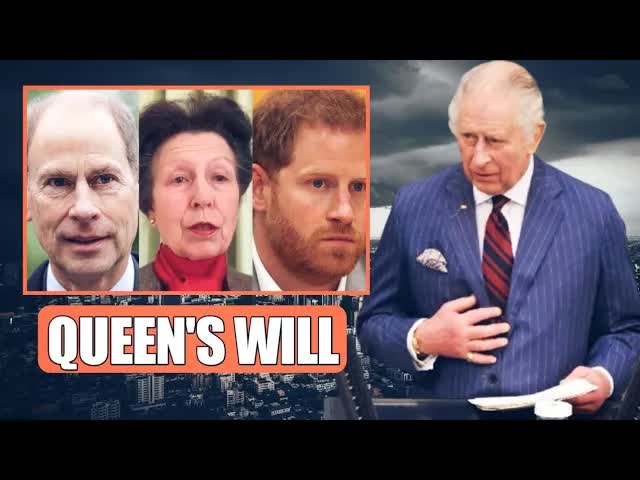Queen Elizabeth II, who passed away in 2022 at the remarkable age of 96, had a unique financial setup that didn’t involve a traditional salary.
Instead, she received financial backing from the Sovereign Grant, a program funded by taxpayers, and inherited a vast array of assets from her ancestors, including land, castles, and treasures.
According to Forbes, her personal wealth was estimated at an impressive $657 million.
The Queen’s income sources were diversified, including the Crown Estate, her private estate, a varied stock portfolio, and her personal belongings.
Notable among her possessions were a stunning stamp collection, an array of artwork, exquisite jewelry, and even a stable of magnificent horses.
Interestingly, a portion of her fortune, a substantial $17 million, was reported to be invested in offshore portfolios in the Cayman Islands and Bermuda, as revealed in the Panama Papers leak of 2017.
The Crown Estate, which includes iconic landmarks like Buckingham Palace, Windsor Castle, and Holyrood Palace, played a significant role in enhancing the Queen’s financial status.
The Sovereign Grant, an annual allowance granted to the reigning monarch, was derived from the profits generated by the Crown Estate.
In exchange, the Queen surrendered the remaining revenue to the UK government, with the exact percentage of the Crown Estate’s earnings allocated to the monarch subject to government determination and potential fluctuations.
For instance, in 2017, an agreement was reached that the Queen would receive 25% of the Crown Estate’s profits over the following decade to support the extensive refurbishment of Buckingham Palace.
This grant covered various expenses related to her royal duties, including official engagements and staff salaries.
In the fiscal year 2021-2022, the UK government allocated a substantial $131 million as the Sovereign Grant, translating to nearly $2 per person in the United Kingdom, as per the Royal Family’s financial records.
Moreover, it is mandated by law that the UK government’s Treasury steps in to supplement the grant if the profits from the Crown Estate decline, ensuring that the designated targets are met.
This scenario unfolded in 2020, signaling that the next in line to the throne, King Charles III, would also benefit from the Sovereign Grant.
Apart from the Crown Estate, the Queen owned private properties inherited from her father, such as the grand Balmoral Castle in Scotland and the splendid Sandringham House in the United Kingdom.
The distribution of the Queen’s wealth was determined by her will, a customary practice among members of the Royal Family.
While the specifics of royal wills are typically kept private, it is widely believed that King Charles will inherit Balmoral Castle and Sandringham House.
As noted by CTV News royal commentator Richard Berthelsen, it is likely that additional inheritances may be extended to various individuals, including family members and staff, but the bulk of personal property is expected to pass on to King Charles in his personal capacity.
The distinction between private property and state assets was underscored by Berthelsen, emphasizing that the majority of both categories would be inherited by the King, while assets held in trust for the nation, such as the art and jewels, would also fall under his purview.
The fate of Queen Elizabeth’s private assets, including her stock portfolio and investments, remains uncertain, with potential implications for inheritance tax obligations.
Despite the 40% inheritance tax in the UK, King Charles III is expected to be exempt from this tax on the inheritance received from his mother, courtesy of a government memorandum that exempts sovereigns from such taxes on assets exceeding a specified threshold.
Notably, certain royal assets held by the Queen in her capacity as sovereign are deemed ineligible for inheritance tax, including official residences, the royal archives, and the royal collection of artworks.
King Charles III has already transferred the Duchy of Cornwall, a substantial private estate valued at $1.5 billion and spanning nearly 140,000 acres, to his eldest son, Prince William.
This estate serves as a crucial source of income for the royal family, supporting a range of public, private, and charitable activities under the title of the Duke of Cornwall, traditionally held by the reigning monarch’s eldest son.
While the bequests to Queen Elizabeth’s other children, Princess Anne, Prince Andrew, and Prince Edward, as well as her grandchildren and close relatives, have yet to be disclosed, current estimates peg King Charles III’s net worth at approximately $578 million, with his real estate holdings valued at around $1.8 billion.
The intricate web of royal finances and inheritances continues to unfold, shaping the future of the British monarchy in the wake of Queen Elizabeth II’s passing.
Thank you for engaging with this detailed account, and feel free to share your insights in the comments section.
